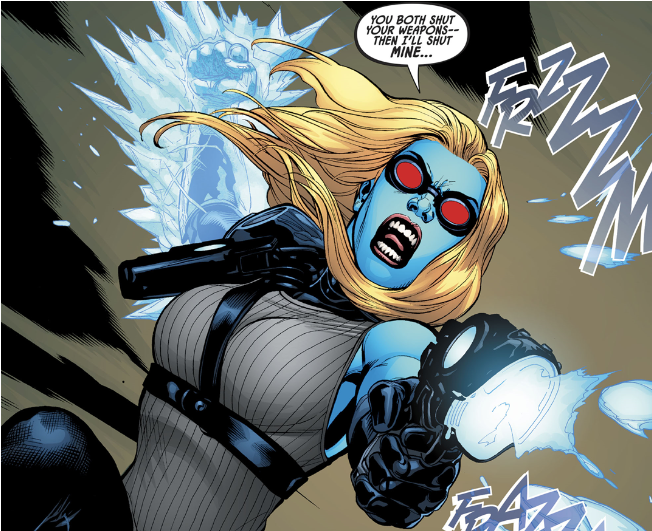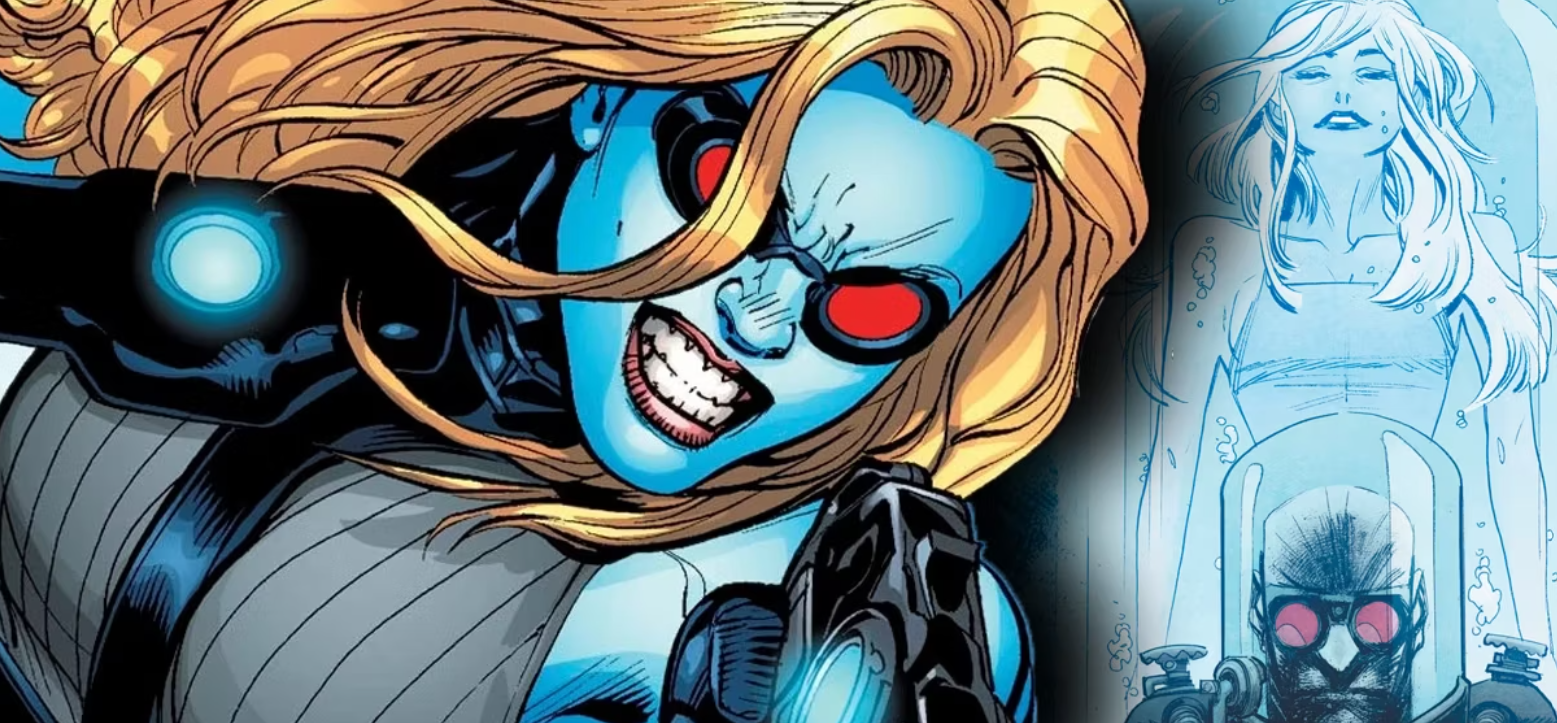Nora Fries is a compelling fictional character, primarily known from the universe of DC Comics. First introduced in the Batman: The Animated Series, Nora has become a significant figure in the Batman mythology. She is the beloved wife of Victor Fries, who turns into the iconic Batman villain, Mr. Freeze, as he desperately seeks a cure for her terminal illness. Nora’s tragic condition is the driving force behind her husband’s transformation into a life of villainy.
Her character is a symbol of enduring love and devotion, and her story adds depth and emotion to the otherwise cold and ruthless character of Mr. Freeze. While Nora does not possess any superhuman abilities, her significance lies in her impact on other characters, shaping their actions and motivations. Her illness is often depicted as a rare and incurable condition, which Victor Fries, a brilliant cryogenicist, attempts to cure using experimental treatments.
One of the enduring aspects of Nora’s character is her state of suspended animation. To halt the progression of her disease, Victor places her in a cryogenic state, keeping her alive yet frozen in time. This poignant circumstance underscores the lengths Victor is willing to go to save his wife, showcasing a more human side to the typically villainous Mr. Freeze.
Throughout her various portrayals in comic books, animated series, and films, Nora Fries remains a poignant symbol of love and tragedy. Her character serves to humanize her husband, adding layers of emotional complexity to his character. While she may not be on the front lines battling alongside Gotham’s superheroes, her influence is undeniably significant within the narrative. Nora Fries, though often unseen and silent, is a catalyst for pivotal events in the Batman universe, and her story continues to resonate with audiences.

Appearances and Role in the DC Animated Universe
In the DC Animated Universe, appearances play a crucial part in defining and distinguishing between characters, reflecting their personalities, powers, and affiliations. For example, Superman, with his iconic blue suit, red cape, and ‘S’ emblem, radiates an aura of hope and strength. Batman, on the other hand, dressed in dark hues, encapsulates the essence of mystery and vigilance. Their appearances are not merely aesthetic, but also serve to symbolize their respective roles within the universe.
The role of a character in the DC Animated Universe is defined not only by their superpowers but also by their moral compass, relationships, and backstory. For instance, Superman, an alien from Krypton, is the embodiment of a savior, always ready to protect the world from harm. Meanwhile, Batman, a human with no superpowers, takes on the role of a dedicated detective and vigilante, driven to prevent the tragedy that befell his parents from happening to others.
Moreover, appearances and roles often intersect in compelling ways, enhancing the overall narrative. Characters may undergo transformations or adopt new personas, visually represented through changes in their appearance. For example, the transformation of Dick Grayson from Robin to Nightwing showcases his growth and maturity, as he steps out of Batman’s shadow to forge his own identity.
In the DC Animated Universe, appearances serve to emphasize the characters’ roles, highlighting their strengths, vulnerabilities, and the evolution of their personal journeys. This dynamic interplay between appearances and roles deepens the audience’s connection with the characters, making the DC Animated Universe a rich, immersive, and enduringly popular realm of storytelling.
Depictions in Comic Books
Comic books, a medium once dismissed as mere child’s play, have evolved into a dynamic platform for storytelling, social commentary and visual artistry. Their depictions are as varied as the genres they span, ranging from superheroes and fantastical realms to gritty realism and poignant human experiences. These depictions are not merely superficial renderings; they are intricate, thought-provoking narratives that reflect and influence societal norms, values, and beliefs.
The superhero genre, for instance, often features extraordinary beings who use their powers to protect humanity. These characters, in their various depictions, embody ideals of courage, self-sacrifice, and resilience, serving as aspirational figures for readers. On the other hand, comics focusing on real-life issues offer stark, unflinching portrayals of societal challenges, stirring empathy and awareness in the readers.
Moreover, the visual nature of comic books adds another layer to their depictions. Artistic styles can range from the polished and detailed to the abstract and minimalistic, each evoking a different mood and interpretation. These visuals can enhance the impact of the narrative, making the characters and their experiences more relivable and immersive.
However, depictions in comic books have also been a source of controversy. Some argue that certain portrayals perpetuate harmful stereotypes and normalize violence. For instance, the portrayal of women in some comic books has been criticized for its hypersexualized and objectified depictions. Others counter that comic books merely mirror the complexities and contradictions of the society they originate from.
Regardless of one’s perspective, it is undeniable that comic books are a powerful medium of expression, capable of both reflecting and shaping societal perceptions. With their vivid visuals and compelling narratives, they invite readers to step into different worlds, explore diverse experiences, and engage with complex issues. As such, the depictions in comic books are not just entertainment but also a significant aspect of cultural discourse.

Portrayal in Film Adaptations
The portrayal of characters, events, and themes in film adaptations often varies significantly from their original source material, usually novels, plays, or comic books. This variation is due to numerous factors including the distinctiveness of the cinematic medium, the vision of the filmmakers, and the constraints of time, budget, and audience expectations. The transformation of a written narrative into a visual one necessitates certain changes, additions, or subtractions to make the story more engaging and relatable to the viewing audience. Therefore, the depiction in film adaptations can be quite diverse, challenging, or even controversial.
For instance, some film adaptations may opt for a more realistic approach, which may involve toning down fantastical elements or exaggerating mundane details to enhance relatability or dramatic tension. Others might choose to emphasize the spectacle, using the unique visual and auditory capabilities of cinema to bring to life aspects of the source material that were merely suggested or implied. This can be particularly evident in adaptations of fantasy or science fiction works, where the creators have a lot of freedom in interpreting and visualizing the original text.
Moreover, the portrayal of characters in film adaptations can vary widely as well. Filmmakers might choose to omit certain characters, amalgamate several into one, or invent new ones entirely. Such changes are often made to streamline the narrative, create a more cohesive storyline, or to add depth and nuance to the plot. Additionally, the interpretation of characters can differ based on the actor’s performance, the director’s vision, or the screenwriter’s script.
Overall, the depiction in film adaptations is a complex and delicate process. It demands a careful balance between honoring the integrity of the original work and making it accessible and engaging for a contemporary audience, often leading to diverse, creative, and unexpected portrayals.
Representation in Video Games
Representation in video games has become a significant focus in recent years, as developers and players alike recognize the importance of diversity and inclusivity in this popular medium. Traditionally, video games were dominated by characters that fit a narrow demographic, primarily young, white, male protagonists. However, as the global gaming audience has grown and diversified, there has been an increasing demand for characters and narratives that reflect a broader range of experiences and identities. This includes not only racial and ethnic diversity, but also gender diversity, representation of different sexual orientations, and characters with disabilities.
Representation in video games is essential for many reasons. It allows players to see themselves in the characters they play as, fostering a deeper connection to the game and enhancing the overall playing experience. It also promotes empathy and understanding, as players are able to step into the shoes of characters with different backgrounds and experiences from their own. Additionally, diverse representation can help challenge and break down harmful stereotypes, paving the way for a more inclusive and understanding society.
Despite the progress that has been made, there is still much work to be done to improve representation in video games. Many games still fall back on harmful stereotypes, or fail to include diverse characters at all. Developers must continue to listen to their diverse player base and strive to create games that reflect the rich diversity of the world we live in. This includes not only creating diverse characters, but also crafting narratives that treat these characters with dignity and respect.
In conclusion, representation in video games is not just about ticking boxes or meeting quotas. It’s about recognizing that players come from all walks of life, and creating games that reflect and respect that diversity. It’s about telling diverse stories, and promoting empathy and understanding through shared experiences. It’s a critical issue that the gaming industry must continue to address, for the benefit of all players.

Batman: Arkham Series and Involvement
The Batman: Arkham series is an action-packed video game franchise that allows players to take on the role of the iconic superhero, Batman. This series, developed by Rocksteady Studios, features a highly interactive world and a gripping narrative that immerses the player in the dark, gritty universe of Gotham City. The involvement in this series is multi-layered. On one hand, players are engaged in a richly detailed storyline that requires strategic thinking, quick reflexes, and a keen detective’s eye.
They must navigate through a series of challenges and confrontations, using Batman’s various gadgets and combat skills to overcome adversaries, solve riddles, and unravel the intricate plot. On the other hand, the series also invites players to dive deeper into the Batman mythos, exploring the origins and motivations of various characters, as well as the complex dynamics between them. It’s not just about defeating villains; it’s about understanding the psyche of these characters and the moral dilemmas they face. Furthermore, the series has also involved the wider community, with fans theorizing about plotlines, sharing gameplay strategies, and even creating mods and fan art. This level of involvement goes beyond passive consumption, making the Batman: Arkham series a cornerstone of interactive entertainment and a compelling exploration of the Batman universe.
